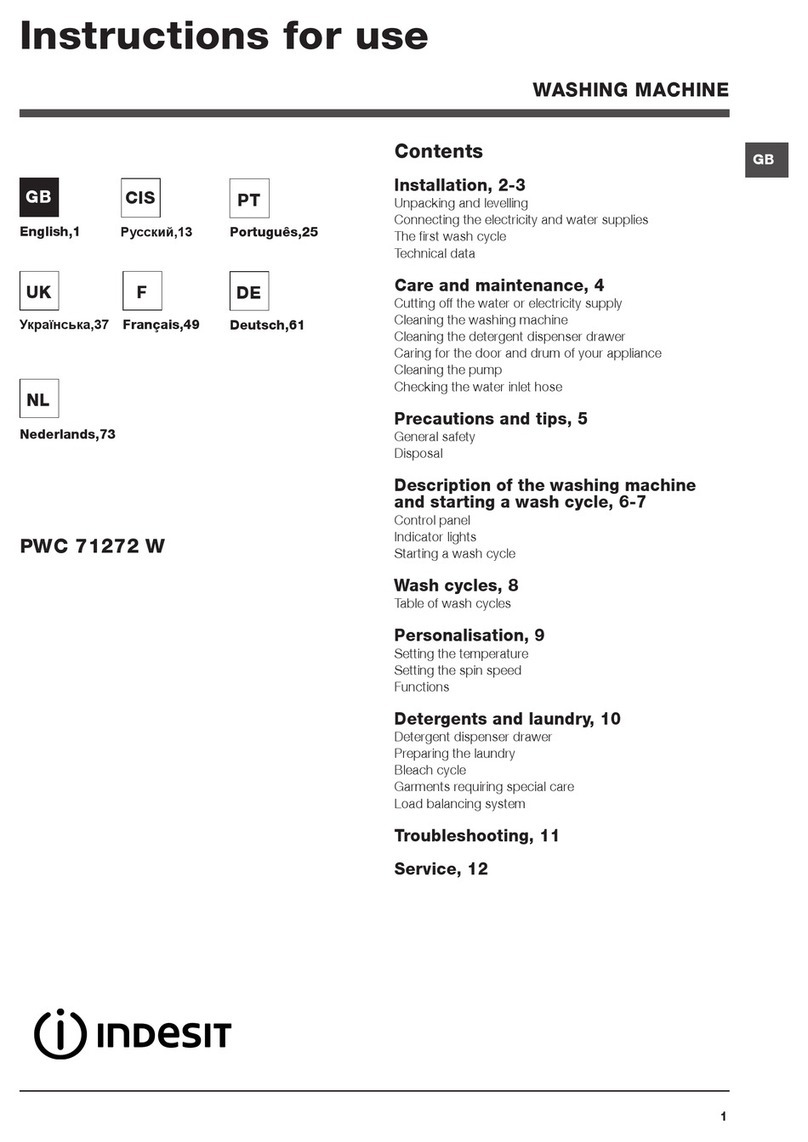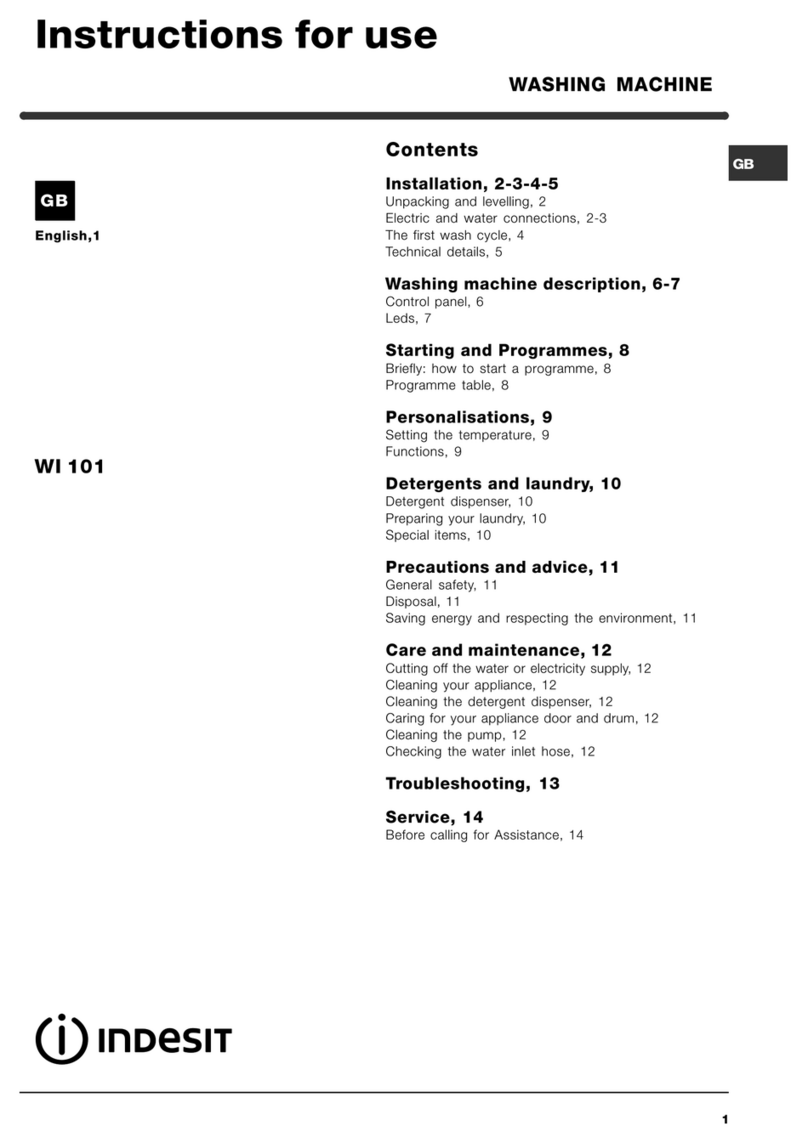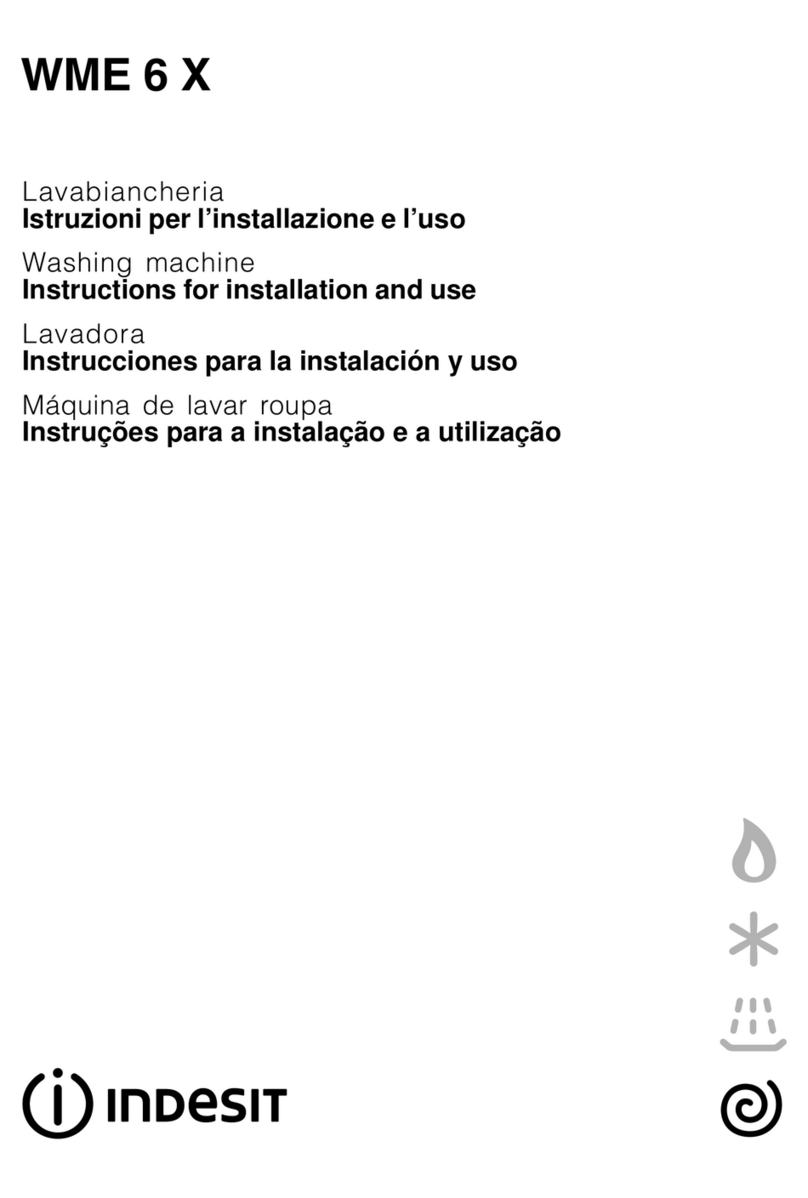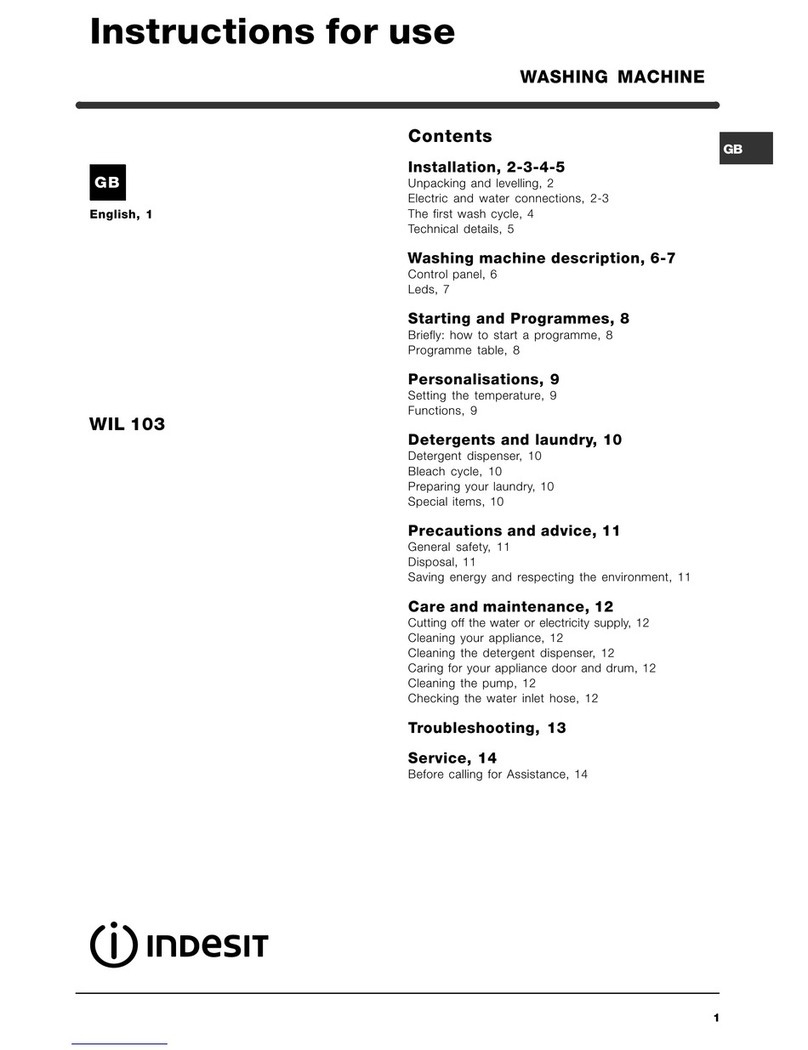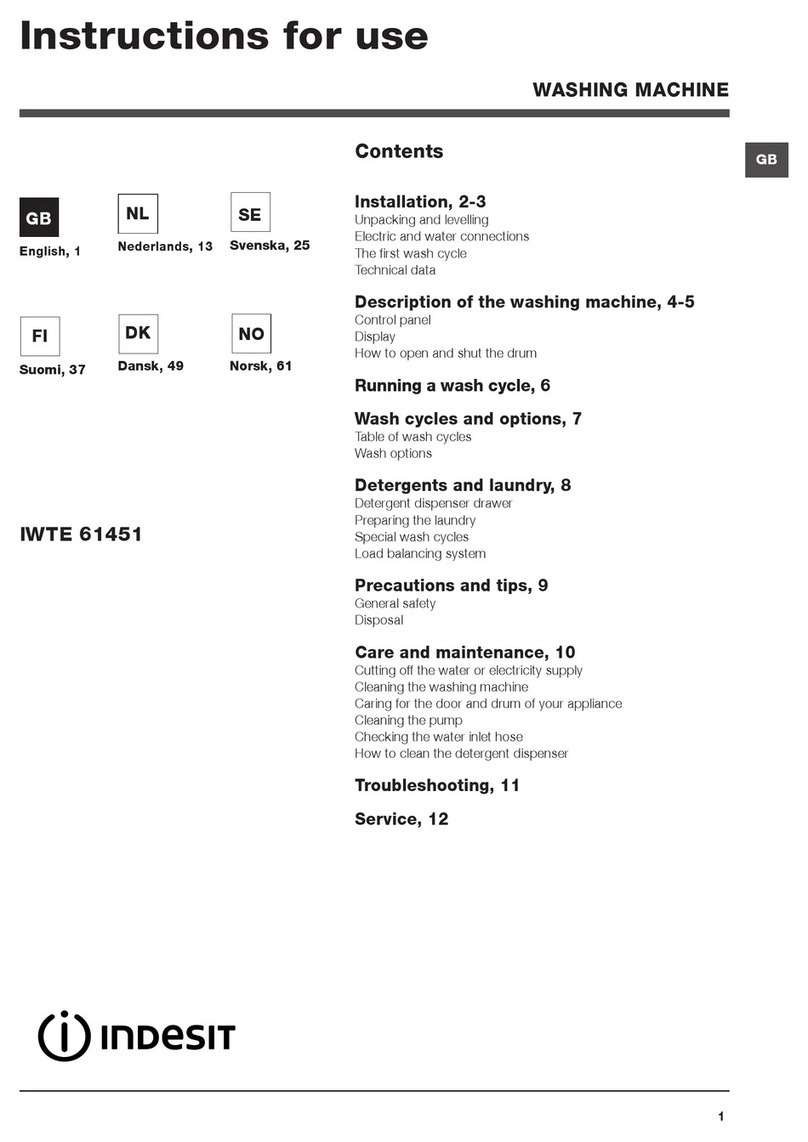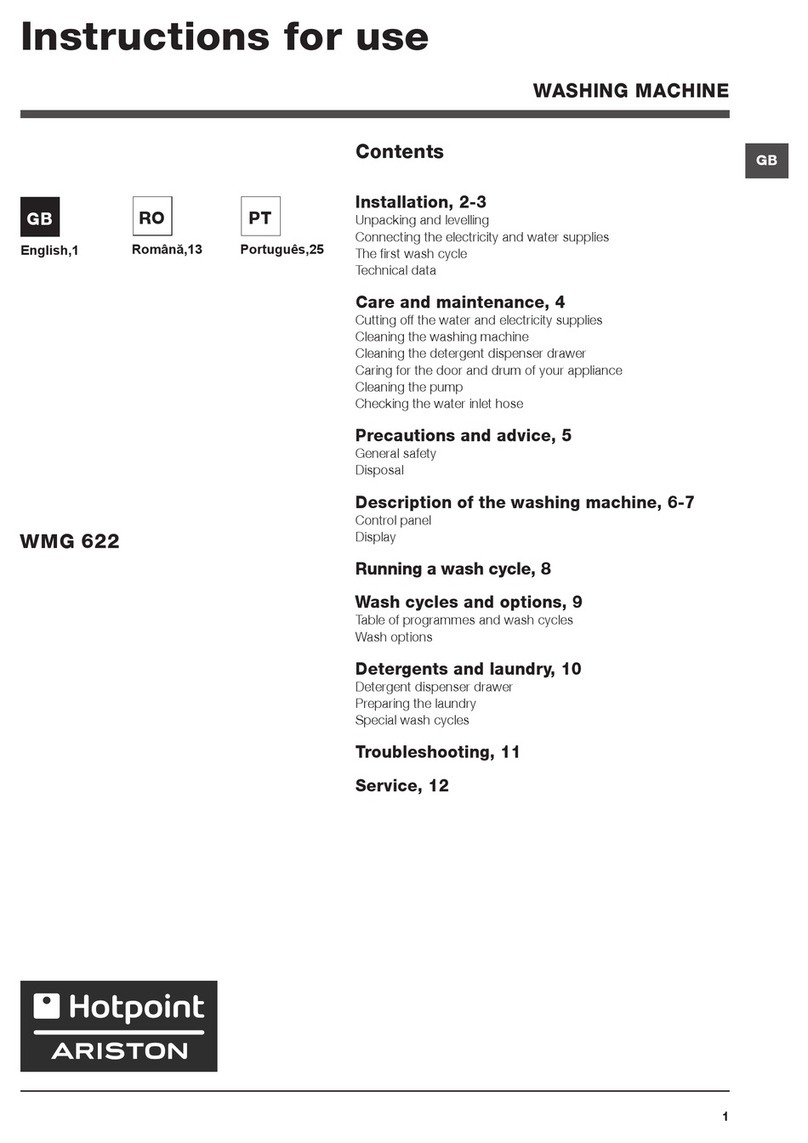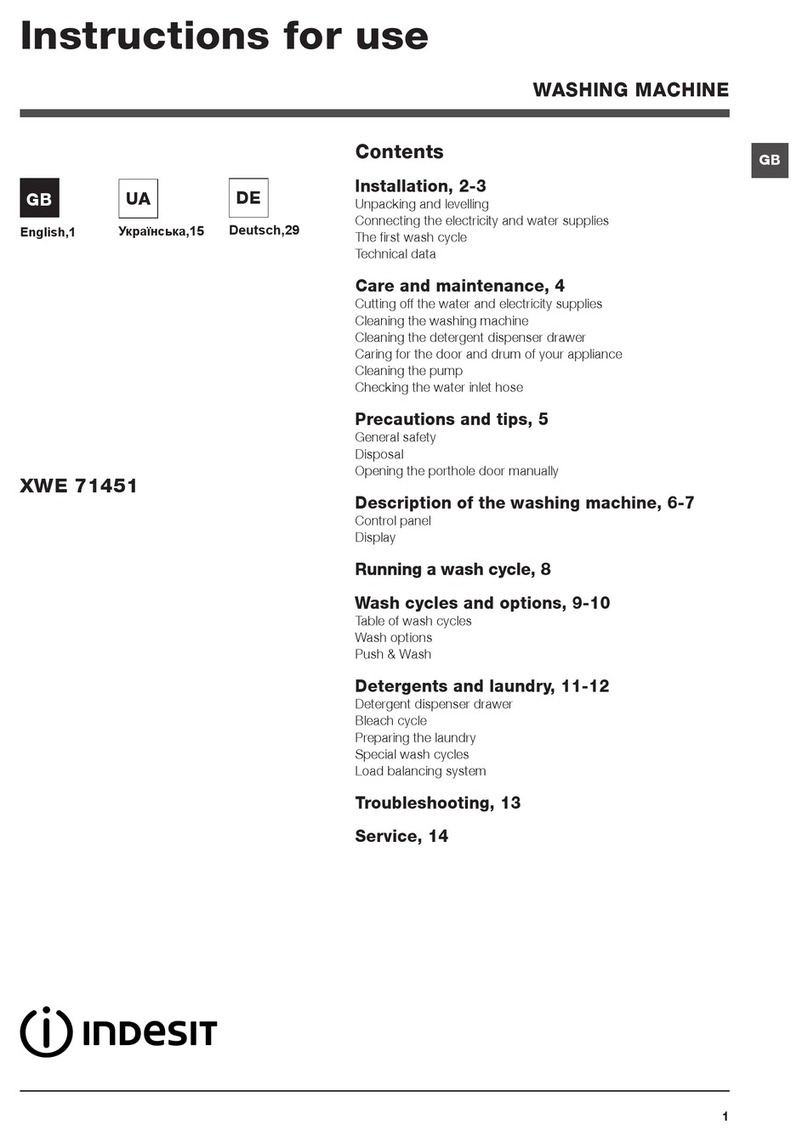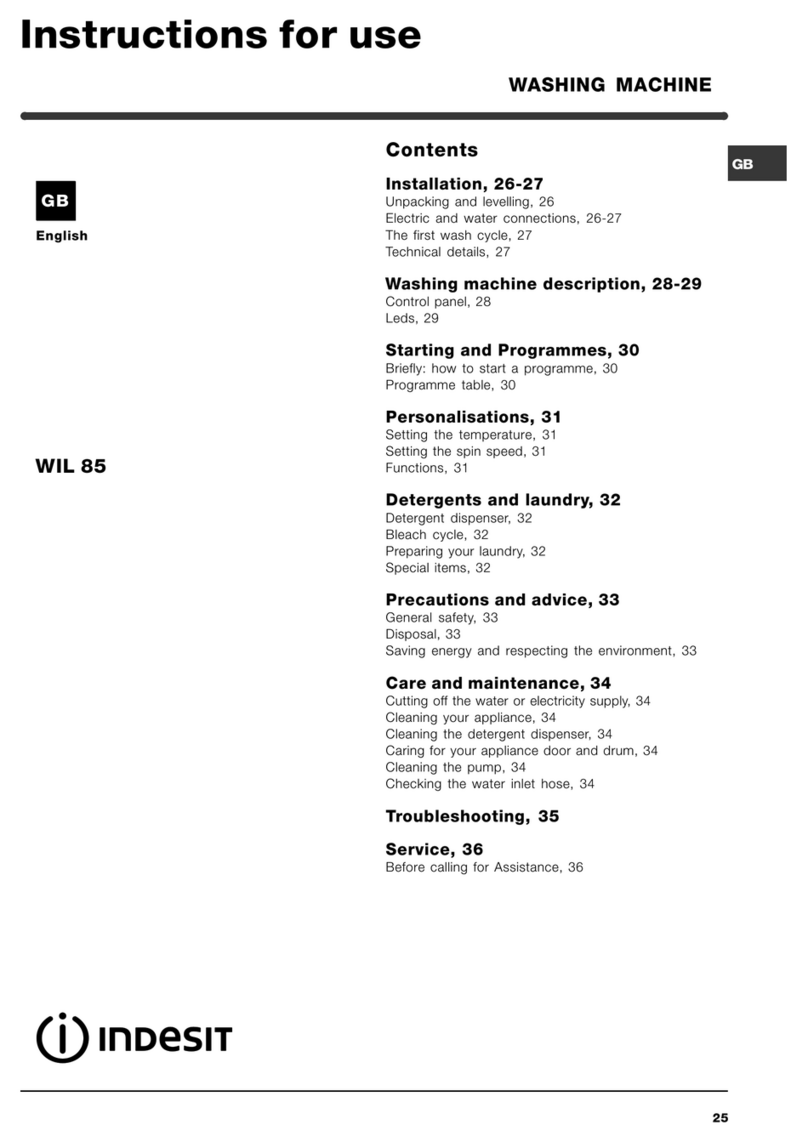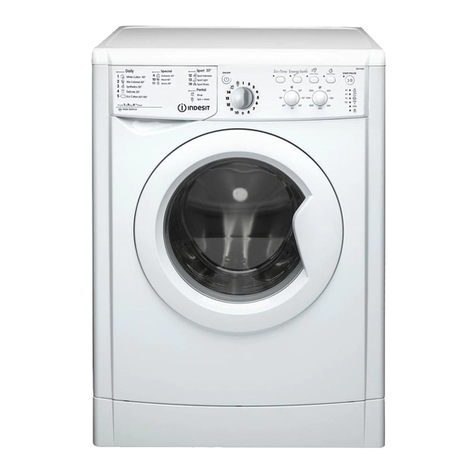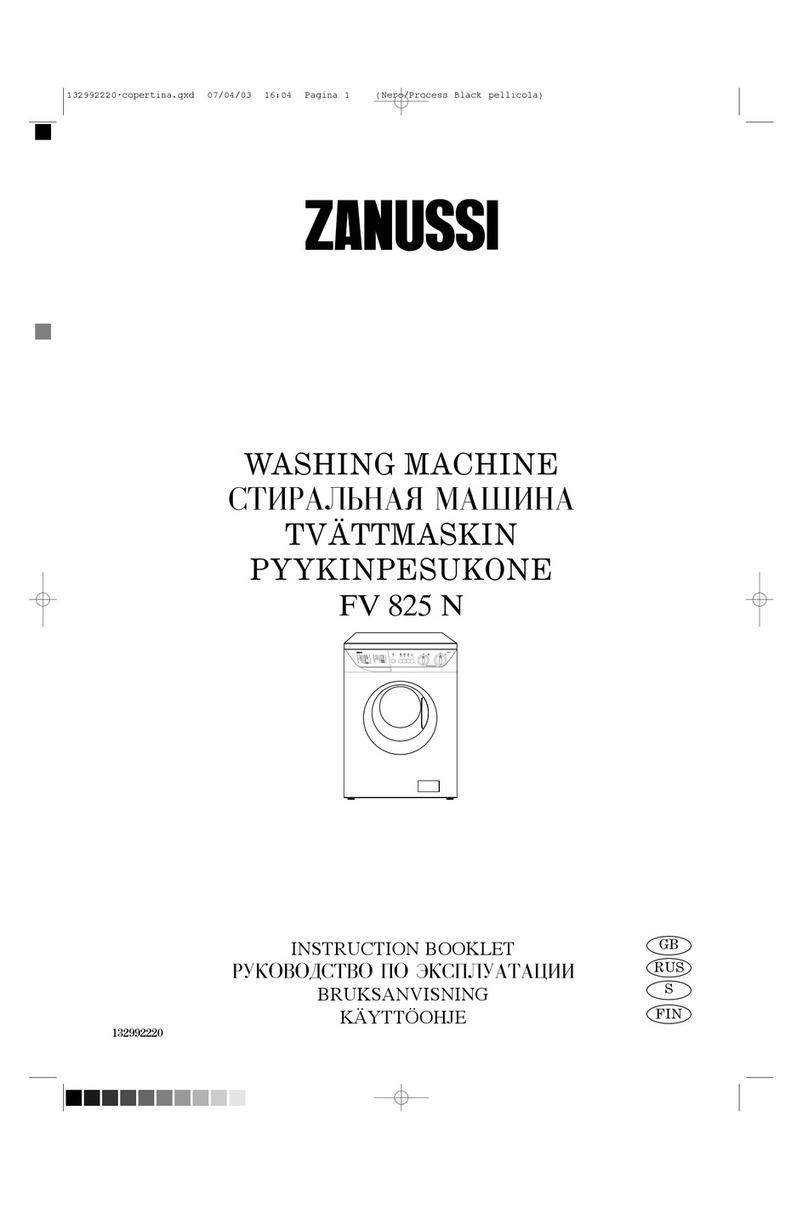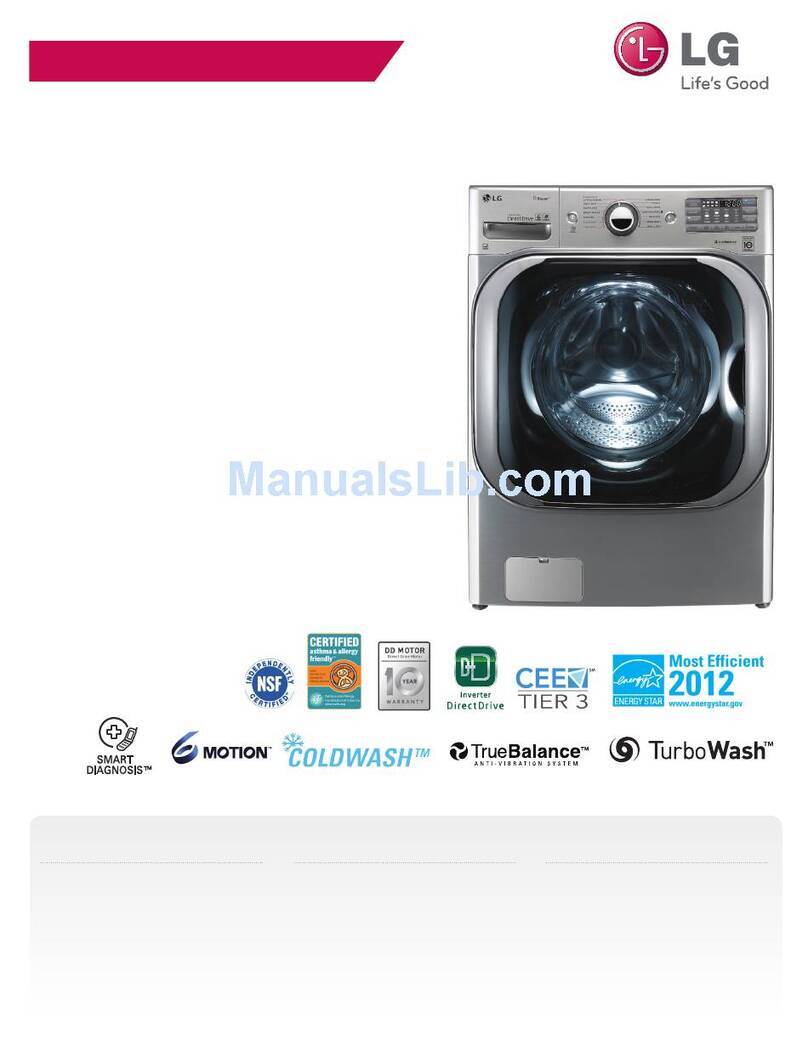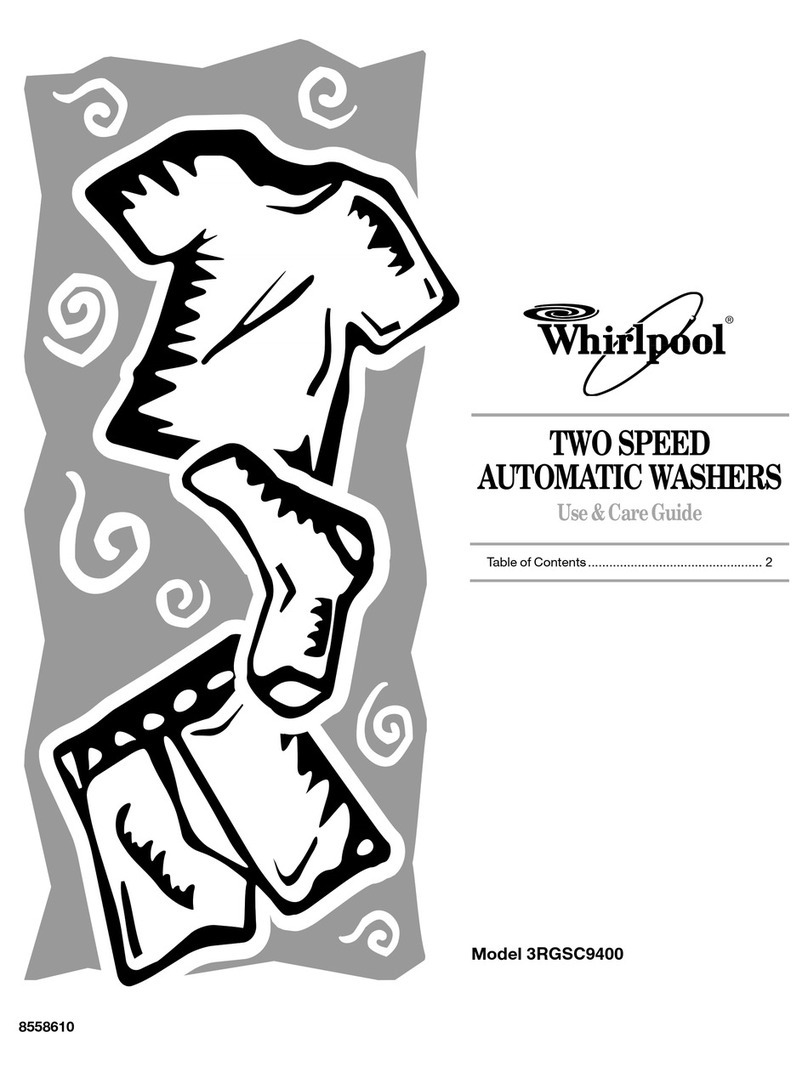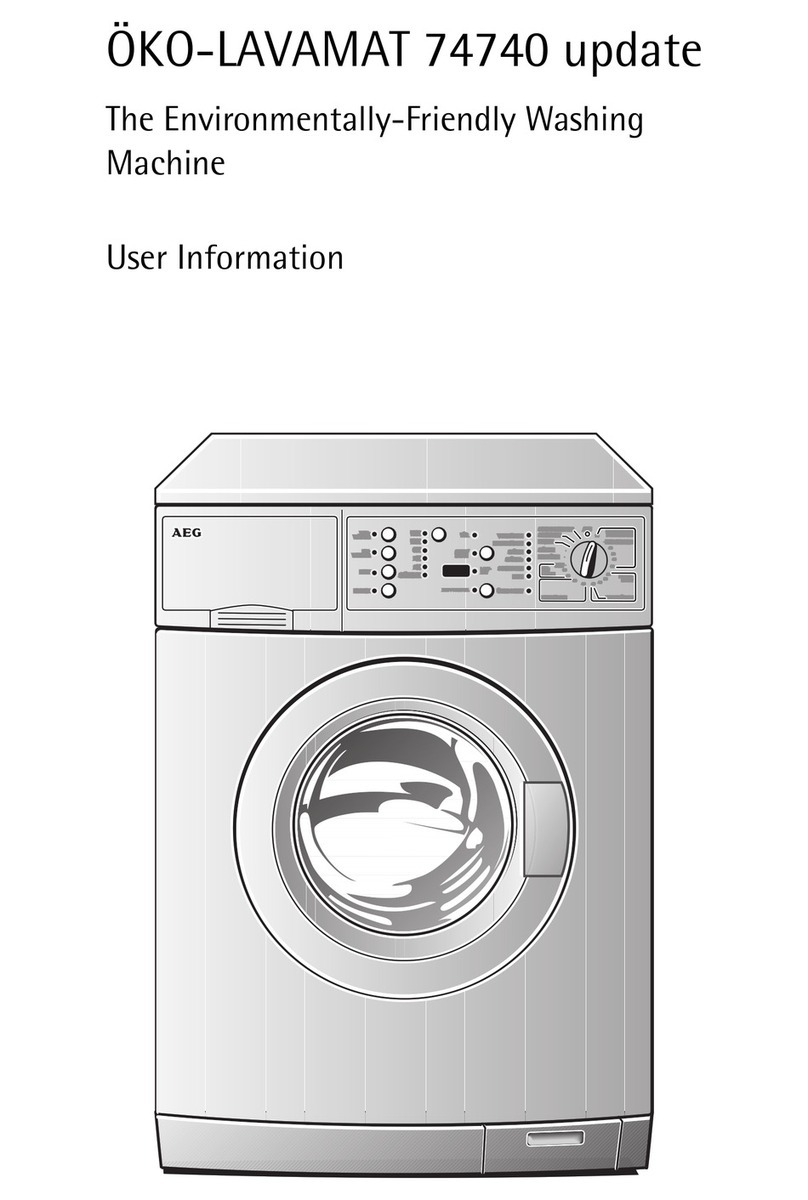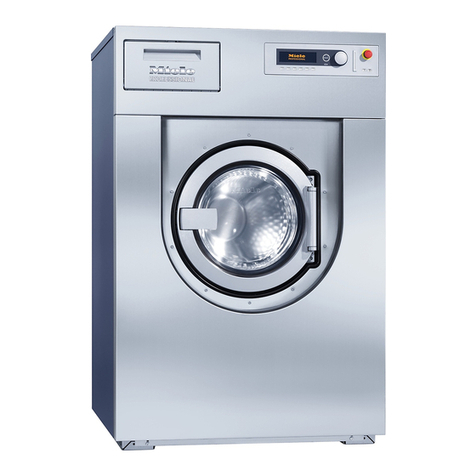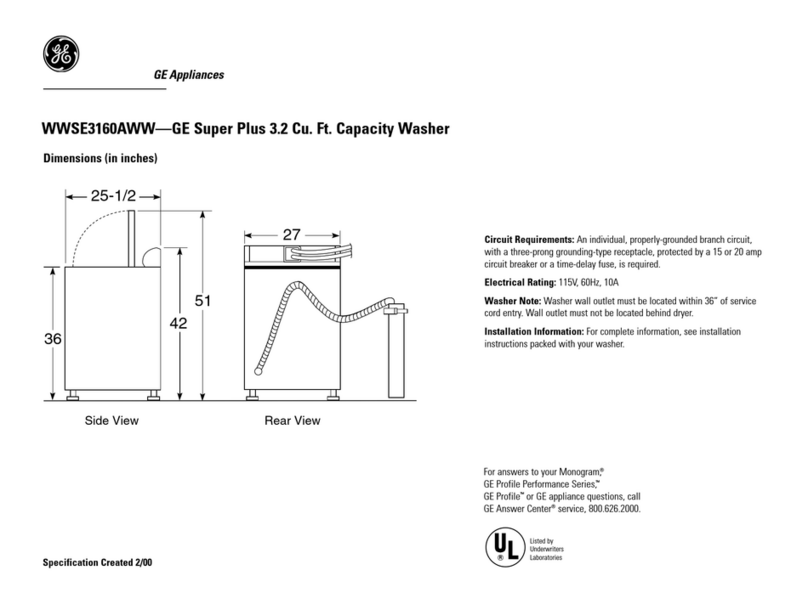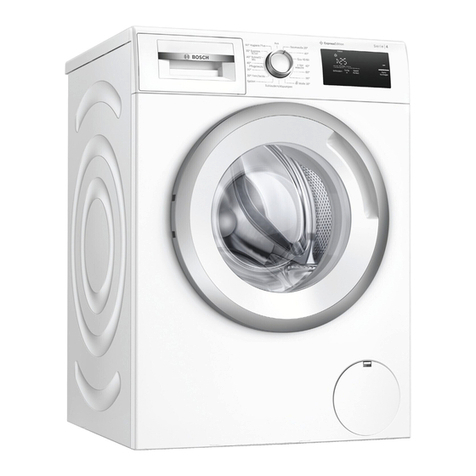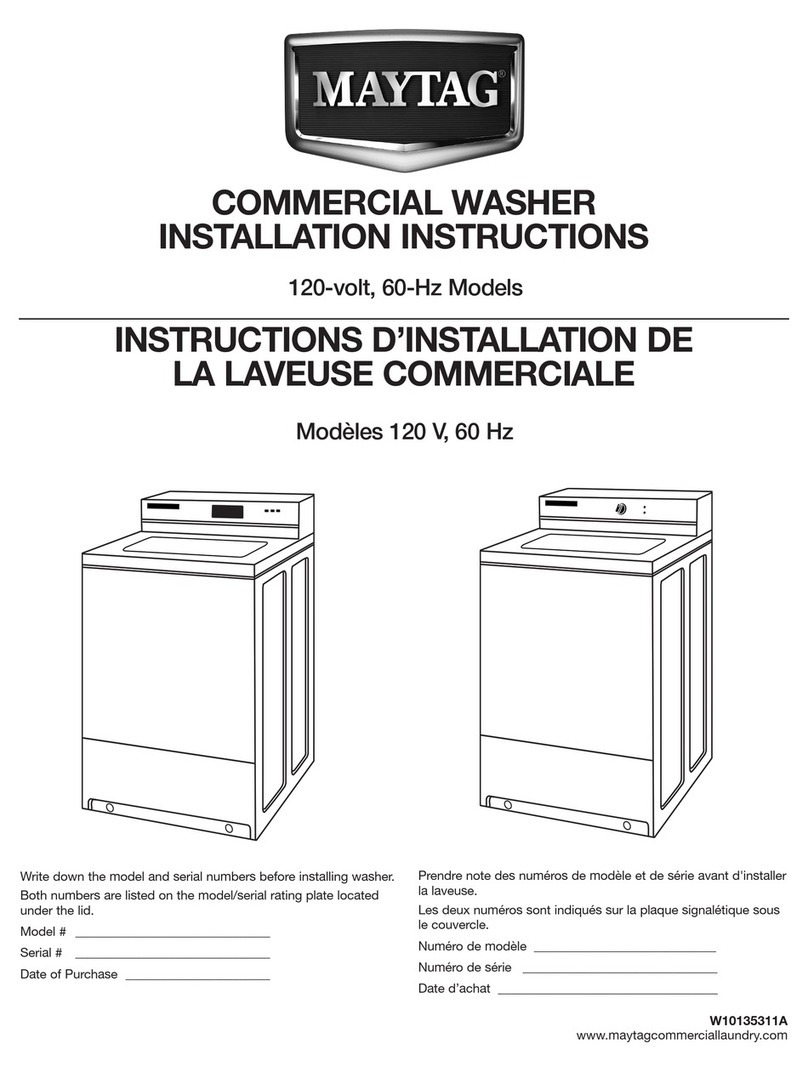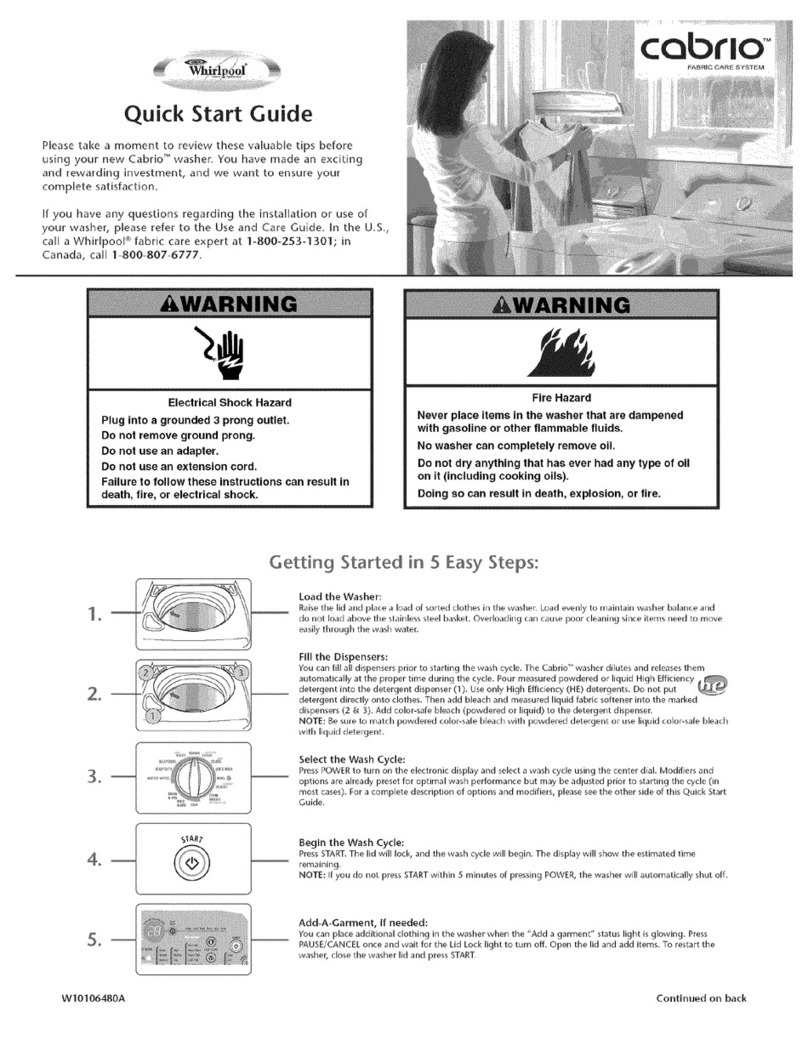8
GB
How to un a wash cycle o a
d ying cycle
1. SWITCH THE MACHINE ON. Press the
button; the START/PAUSE indicator light will flash
slowly in a blue colour.
2. LOAD THE LAUNDRY. pen the porthole door.
Load the laundry, making sure you do not exceed
the maximum load value indicated in the table of
programmes and wash cycles on the following page.
3. MEASURE OUT THE DETERGENT. Pull out the
detergent dispenser drawer and pour the detergent
into the relevant compartments as described in
Detergents and laundry.
4. CLOSE THE DOOR.
5. SELECT THE WASH CYCLE. Use the WASH
CYCLE SELECT R knob to select the desired wash
cycle. A temperature and spin speed is set for each
wash cycle; these values may be adjusted. The
duration of the cycle will appear on the display.
6. CUSTOMISE THE WASH CYCLE. Use the
relevant buttons:
Modify the tempe atu e and/o spin
speed. The machine automatically displays the
maximum temperature and spin speed values set for
the selected cycle, or the most recently-used settings
if they are compatible with the selected cycle. The
temperature can be decreased by pressing the
button, until the cold wash OFF setting is reached.
The spin speed may be progressively reduced by
pressing the button, until it is completely excluded
(the OFF setting). If these buttons are pressed
again, the maximum values are restored.
Setting the d ying cycle
The first time the button is pressed, the machine
will automatically select the maximum drying cycle
which is compatible with the selected wash cycle.
Subsequent presses will decrease the drying level and
then the drying time, until the cycle is excluded
completely ("OFF"). If these buttons are pressed
again, the maximum values are restored.
Drying may be set as follows:
A- Based on the desired laundry dryness level:
Iron: suitable for clothes which will need ironing
afterwards. the remaining dampness softens
creases, making them easier to remove. "A1"
appears on the display.
Hanger: ideal for clothes which do not need to be
dried fully. "A2" appears on the display.
Cupboard: suitable for laundry which can be put
back in a cupboard without being ironed. "A3"
appears on the display.
Extra: suitable for garments which need to be dried
completely, such as sponges and bathrobes. "A4"
appears on the display.
- Based on a set time period: between 30 and 180
minutes (Max. load 4 kg).
If your laundry load to be washed and dried is
much greater than the maximum stated load (see
adjacent ta le of programmes), perform the wash
cycle, and when the cycle is complete, divide the
garments into groups and put some of them back
in the drum. At this point, follow the instructions
provided for a "Drying only" cycle. Repeat this
procedure for the remainder of the load.
A cooling-down period is always added to the end
of each drying cycle.
Drying only
Use the cycle selector knob to select a drying cycle
(11-12-13) in accordance with the type of fabric.
The desired drying level or time may also be set
using the DRYING button .
Modify the cycle settings.
Press the button to enable the option; the indicator
light corresponding to the button will switch on.
Press the button again to disable the option; the
indicator light will switch off.
If the selected option is not compatible with the
set wash cycle, the indicator light will flash and the
option will not be activated.
If the selected option is not compatible with a
previously selected one, the indicator light
corresponding to the first function selected will flash
and only the second option will be activated; the
indicator light for the option which has been
activated will be illuminated.
Note: if the SMART option has been selected,
none of the incompatible options may be activated.
The options may affect the recommended load
value and/or the duration of the cycle.
7. START THE WASH CYCLE. Press the START/
PAUSE button. The corresponding indicator light will
turn blue, remaining lit in a fixed manner, and the
door will be locked (the D R L CKED symbol
will be lit). To change a wash cycle while it is in
progress, pause the washer-dryer using the
START/PAUSE button (the START/PAUSE indicator
light will flash slowly in an amber colour); then
select the desired cycle and press the START/
PAUSE button again. To open the door while a
cycle is in progress, press the START/PAUSE
button; if the D R L CKED symbol is switched
off the door may be opened. Press the START/
PAUSE button again to restart the wash cycle from
the point at which it was interrupted.
8. THE END OF THE WASH CYCLE. This will be
indicated by the text END on the display; when
the D R L CKED symbol switches off the door
may be opened. pen the door, unload the laundry
and switch off the machine.
If you wish to cancel a cycle which has already
begun, press and hold the button. The cycle will be
stopped and the machine will switch off.
